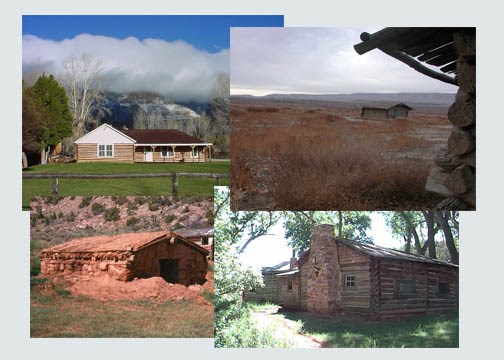
NPS Photos Bighorn Canyon has four historic ranches. They are each different, but have several similarities.
(Disabled Access: For those who have a permanent disability and would like to access one of the historic ranches, please contact the front desk at the Bighorn Canyon Visitor Center at 307-548-5406 at least 48 hours in advance to arrange your visit.) Henry Clay Lovell was drawn to the area in 1883 by the open range. With the backing of Anthony L. Mason, Lovell established what was to be called the ML Ranch. During its heyday, the ranch ran an estimate 24,000 cattle as far south as Thermopolis and as far north as the Crow Reservation in Montana. Although the harsh winter of 1886-87 cut the herd in half, Lovell continued to ranch until his death in 1903. Erastus T. Ewing came in 1896 with his family and his partners in search of gold. After finding only a minimal amount of gold, the partners left, but the Ewing family stayed and turned to ranching. After changing hands a couple of times, Philip and Alma Snell purchased the ranch in 1920. The Ewing/Snell Ranch is now named after the man who established it and the family that lived there the longest. Grosvener W. Barry was drawn to the canyon by gold in 1903 and realized that he wasn't going to get rich. Being a promoter at heart, Barry and his family turned to dude ranching. He advertised his Cedarvale Ranch at Hillsboro, Montana as a sportsman's paradise, where guests could stay all summer. Barry is credited with being the first person to recognize and exploit the recreational opportunities of Bighorn Canyon.
|
Last updated: February 24, 2015
